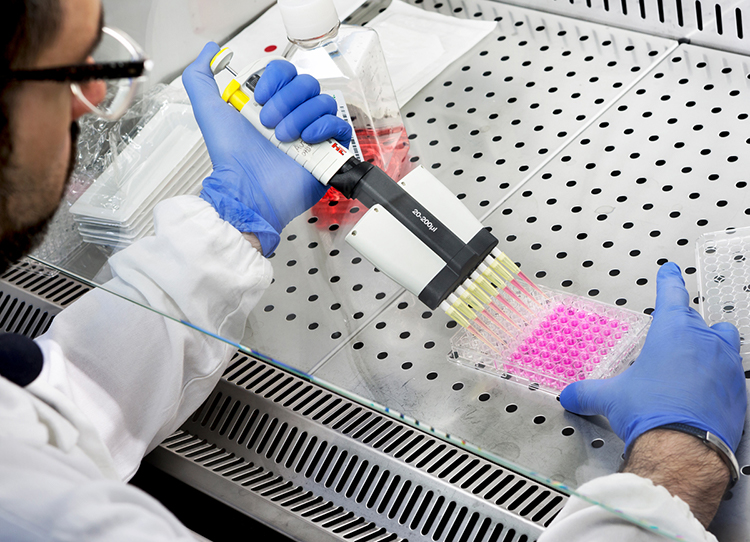- All categories
- Cosmetics
- Medical devices
- Biocidal products
- Detergents
- Food supplements
- Medical surgical devices
- Hazardous mixtures
- E-Cigs, E-liquids
In Vitro Evaluation of the Cytotoxicity of Medical Devices
The test is performed on fibroblast cell cultures to assess the potential release of cytotoxic substances from a Class I / IIa / IIb / III medical device. The analysis is carried out in accordance with the ISO standard for the biological evaluation of medical devices (UNI EN ISO 10993-5).
NRU - Evaluation of Potential Skin/Ocular Irritation
The NRU test allows the evaluation of a product's toxicity on keratinocyte cultures and provides a good approximation of the product's gentleness and tolerance (potential irritant power) when applied to the skin and/or mucous membranes.
In Vitro Phototoxicity Assay 3T3 NRU
The 3T3 NRU in vitro phototoxicity assay allows to verify whether the tested product is phototoxic, meaning it exhibits toxic effects after light exposure on BALB/C 3T3 murine fibroblast cell cultures (OECD432).
In Vitro Skin Corrosivity Evaluation
The purpose of the test is to evaluate the in vitro skin corrosivity of a product (OECD431).
In Vitro Skin Irritation Test on Reconstructed Epidermis
The test involves applying the product to be tested (as is) on a reconstructed human epidermis model, followed by the evaluation of cell viability (MTT). The reduction in tissue viability exposed to chemical agents compared to negative controls is an indicator of potential skin irritation (OECD 439).
In Vitro Irritation Test on Tissues
The test is performed on reconstructed tissues and allows the evaluation of the potential irritancy of substances, without the use of animal testing.
Short Time Exposition
The Short Time Exposition (STE) method is a test based on the evaluation of in vitro cytotoxicity, performed on a confluent monolayer of rabbit corneal cells (SIRC). (OECD491).
Ocular Irritation Test on Reconstructed Epithelium
The purpose of the test is to apply the tested sample to the surface of the reconstructed ocular epithelium and quantitatively determine cell viability, which allows for the classification of the sample as irritant or non-irritant (OECD 492 e 492E).
In Vitro Evaluation of the Potential Pro-Sensitizing Effect
The purpose of the test is to evaluate the absence of pro-sensitizing effects on Medical device (OECD442E) and cosmetics product.


